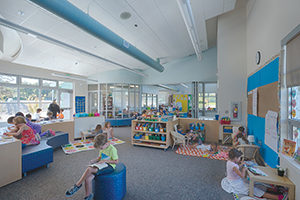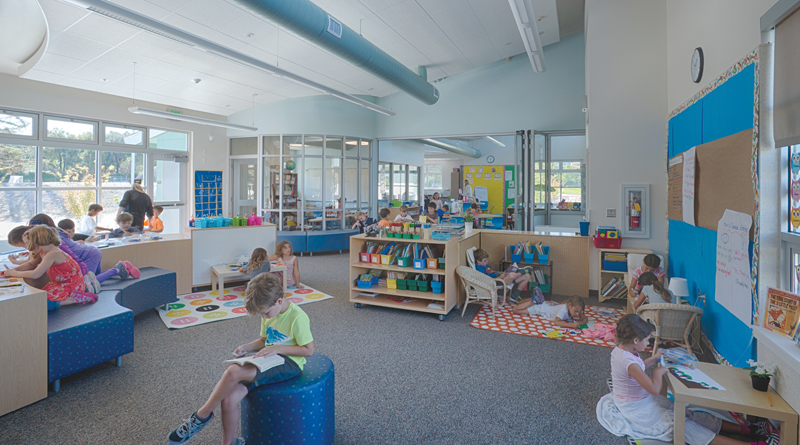Approach Efficiency with Old-School Intuition & New-Age Measures
By Mark Quattrocchi
Like most architecture students in the late 1970s, I have humble beginnings with infusing energy-efficiency considerations in design. As a University of California, Berkeley architecture student, energy-efficient design was more intuitive than calculated, with design tools limited to daylight study models or paper sun-angle calculators. After graduate school, I briefly worked for the Passive Solar Group at the Lawrence Berkeley National Laboratory doing glazing and sunshade studies using a room-sized computer — calculations that can now be done by the mobile phone in my pocket. But for the practicing architect, techniques used since ancient times that consider building orientation, ventilation, materials and daylight were what we used to create energy-efficient design.

Today, as I work with numerous school districts now armed with a dazzling array of design technologies and specialized energy consultants, I am reminded how important some of those simple design techniques remain. It is not uncommon for a district to ask about installing photovoltaic solar panels while still operating schools that consume huge amounts of energy from buildings that leak air and run inefficient mechanical and lighting systems. Certainly, investing in on-site energy generation and energy storage systems are vital to high-performance schools, but we must also implement readily available energy-saving measures.
I always work to help clients determine the best approach to their energy reduction strategies that considers short- and long-term cost savings, resources, environmental stewardship and student/educator health and academic success.
Energy Savings
Energy-efficient facilities, from both an environmental stewardship and cost-saving standpoint, have made their way into the ethos of architects and school-facility staff. My firm, Quattrocchi Kwok Architects (QKA), based in Santa Rosa, Calif., is located in a state that has been at the forefront of energy-efficiency progression, regulatory measures and rebate programs. Recently adopted California energy codes and funding opportunities reflect the school construction industry’s commitment, with tangible energy savings for school districts. Examples include the adoption of CALGreen energy standards and legislation such as the California Clean Energy Jobs Act (Prop 39) to provide funding for energy efficiency and clean-energy generation in schools. With its more than 40-year commitment to energy efficiency, California’s energy use per capita is now the fourth lowest of all the states, according to the U.S. Energy Information Administration.
The energy savings provided by facility improvements have a tangible measurable benefit to a school district’s General Fund. In some states, such as California, funding for facility capital improvements are separate from operational or General Fund expenditures. Historically, this separation has disincentivized school districts from spending their limited facility funds on improvements with higher initial costs, even when they produce long-term savings. However, as energy costs have soared and with better access to funding programs such as Prop 39, school districts are implementing energy-savings measures on new and renovated school projects that have a lasting benefit to the General Fund.
General Fund savings from Prop 39 is abundantly clear, according to the California Energy Commission. Since 2013, more than 2,176 Local Educational Agencies have received $1.4 billion in Prop 39 funding, resulting in annual energy cost savings of more than $74.8 million. Additionally, these school facility improvements have reduced greenhouse gas emissions by nearly 280 million pounds of carbon dioxide. Most of these improvements are lighting and lighting controls, mechanical systems and solar photovoltaic generation.
To read the entire article, check out the July/August issue of School Construction News.
Mark Quattrocchi, AIA, is a principal at Quattrocchi Kwok Architects. He can be reached at markq@qka.com.

